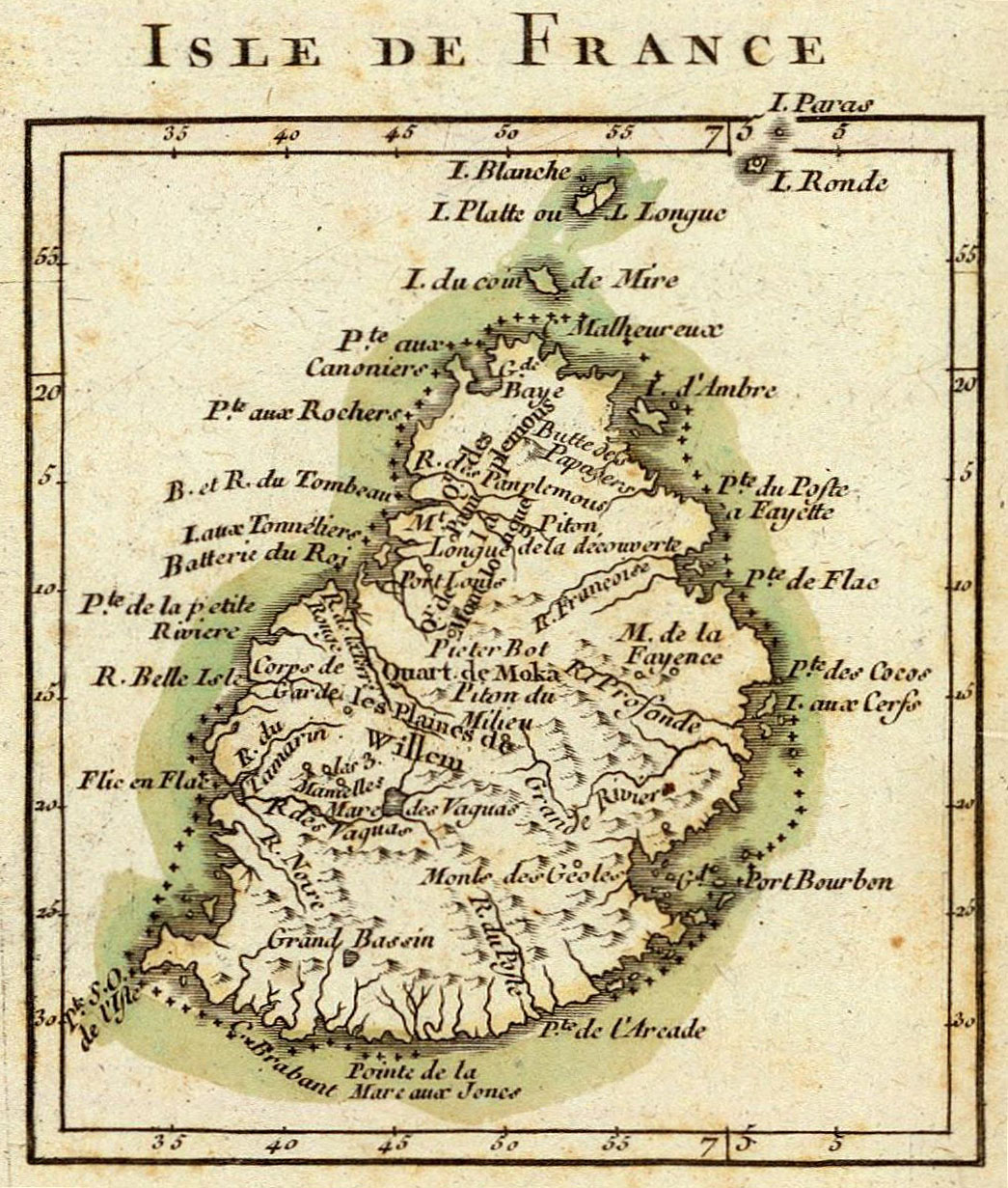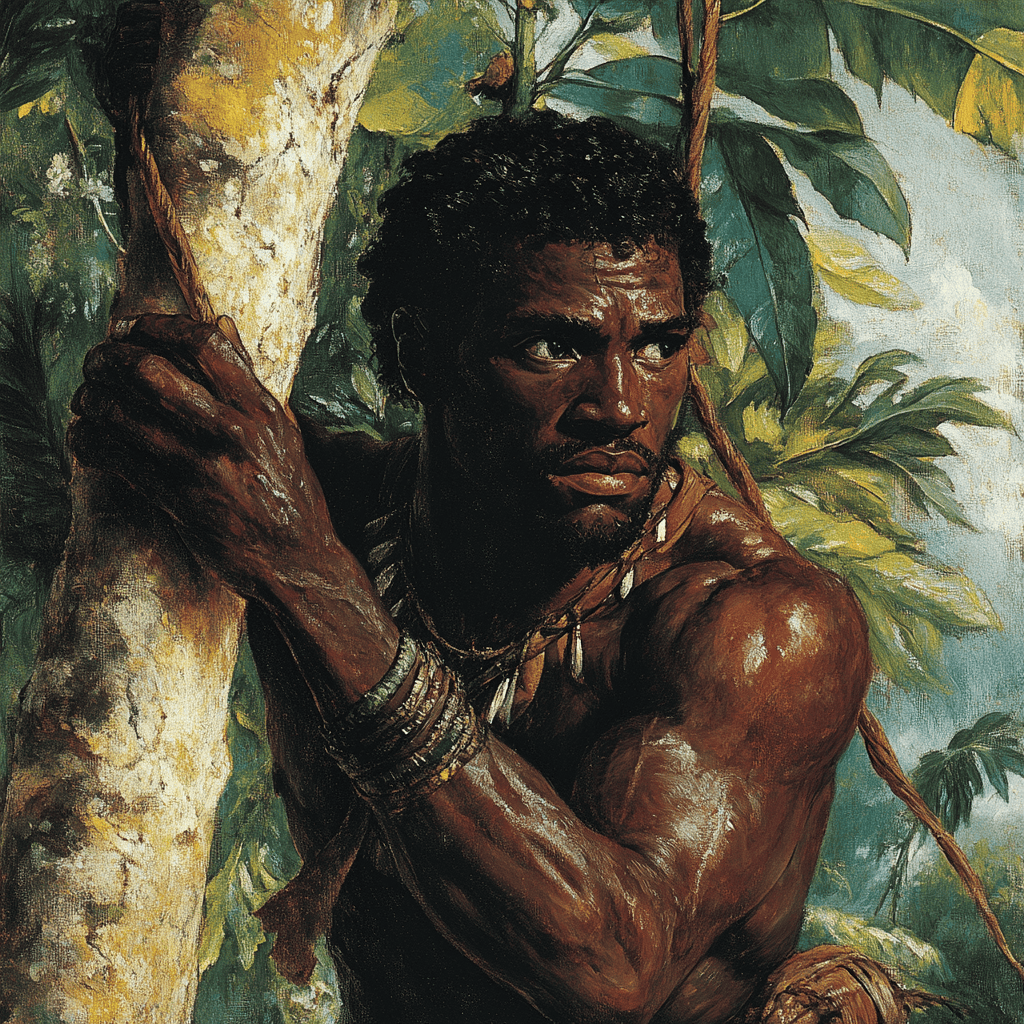Discover the great Maroon leaders of Mauritius and their heroic struggle for freedom during the age of slavery (1797-1823), a key chapter in Mauritian history.
A struggle for freedom during the age of slavery
The abolition of slavery in Mauritius, celebrated every year on February 1st, marks a historical turning point not only for the island but also for the recognition of the tireless efforts of those who fought for their freedom. For centuries, the Maroons—runaway slaves—defied the slavery system by leading rebellions, forming autonomous communities, and organizing raids to survive on an island where they were relentlessly hunted.
Although stories about the Maroons were long neglected by historians, writers, and researchers, their history is now recognized as a crucial testimony of resistance against oppression. Nofi pays tribute to some of the most remarkable Maroon leaders in Mauritian history, such as Bellaca, Roch, Panglose, Tatamaka, and Caëtane, who led groups of fugitives in their quest for freedom between 1797 and 1823. These leaders left their mark not only through their courage but also through their tactical organization in a hostile environment.
Marronage in Mauritius: a relentless resistance

Marronage in Mauritius was a widely practiced form of resistance between 1640 and 1830, nearly two centuries. During this period, many runaway slaves organized into small or large groups to survive in the forests, mountains, and ravines of the island. These groups, often armed, carried out raids on plantations, disrupting the slave economy and posing a permanent threat to landowners.
Between 1790 and 1820, these Maroon bands were particularly well-organized and sought strength in numbers to preserve their freedom and defend themselves against colonial detachments sent to capture them. Maroons were relentlessly pursued by colonial forces, whose objective was to either capture them alive or destroy them. However, their tenacious resistance continues to inspire modern generations and serves as a reminder of the horrors of slavery.
The Maroon leaders were often particularly intelligent and capable individuals, who used their knowledge of the terrain, combat skills, and ingenuity to organize groups of fugitives in a complex struggle against the colonial system. These leaders left an indelible mark on Mauritius’s history and deserve to be honored for their commitment to the quest for freedom.
Bellaca, the Maroon leader of Morne Brabant

One of the most famous Maroon leaders in Mauritius is Bellaca, who led his group from Morne Brabant, one of the emblematic sites of Maroon resistance on the island. Between 1797 and 1802, Bellaca and his group took control of Morne, prompting the colonial assembly to issue a proclamation offering to free any slave who captured or killed Bellaca. This shows how much of a serious threat Bellaca was perceived by colonial authorities at the time.
Despite this proclamation, Bellaca managed to maintain his freedom for several years before being eventually betrayed and killed by a slave named Stalinas Cerf. Bellaca’s sacrifice and the determination with which he defended his freedom, despite the harsh conditions, made him a legendary figure in Maroon resistance in Mauritius.
Morne Brabant, where Bellaca and his group established their camp, is now a UNESCO World Heritage site and is recognized as a powerful symbol of the struggle for slave freedom in Mauritius. Bellaca’s fight and that of his companions represent a vital page in the history of Maroon resistance, and his legacy continues to resonate in the collective memory of Mauritians.
Roch, the Maroon leader of Plaine des Roches

In 1801, another Maroon leader, Roch, a slave of Mozambican origin, led a group of Maroons in the regions of Plaine des Roches and Rivière du Rempart. Roch and his group were active in the southern part of Rivière du Rempart and the northern part of Flacq, where they organized raids on local plantations. Although young—Roch was only in his twenties—he was a respected and feared leader. He was captured and executed after a colonial detachment attacked a Maroon camp near the caves of Plaine des Roches.
Roch’s story not only illustrates the brutality of colonial repressions but also the resilience of the Maroons who, despite their youth and lack of resources, fought fiercely for their survival. Roch, like so many others, sacrificed his life for the cause of freedom, and his name deserves to be remembered as that of a fighter for human dignity.
Tatamaka, Maroon leader of Plaines Wilhems

On July 30, 1804, another Maroon leader named Tatamaka was captured and killed in the Black River gorges after resisting Maroon hunters. Tatamaka, a slave of Mozambican origin, led a group of nine Maroons who raided plantations in the districts of Black River, Plaines Wilhems, and Savanne. Armed with two large knives, Tatamaka refused to surrender when surrounded by a detachment, and was eventually shot after bravely fighting back.
Tatamaka managed to remain at large for over two years, defying colonial authorities and terrorizing landowners. His tenacious resistance and refusal to submit to Maroon hunters made him an iconic figure in the fight against slavery in Mauritius. He exemplifies the determination of the Maroons to live free, even at the cost of their own lives.
Panglose, another Maroon leader of Plaines Wilhems

In 1811, another Maroon leader, Panglose, a Malagasy slave, was killed during an attack by colonial forces on a Maroon camp in Trois Ilots, in the district of Plaines Wilhems. Armed with a saber and wearing gris-gris with mystical significance, Panglose tried to fight back against the Maroon hunters before being shot.
Panglose was respected by his fellow Maroons, largely due to his alleged mystical powers. He managed to convince his followers that he possessed supernatural abilities, which helped him become their leader. His story shows how, under extreme conditions, the Maroons used not only physical survival strategies but also spiritual beliefs to strengthen their cohesion and resistance.
Caëtane, Maroon leader of the Moka District

The last great Maroon leader of this period was Caëtane, a Mozambican slave who led a group of 15 Maroons in the mountains of Le Pouce and the surrounding forests of the Moka district. Between 1822 and 1823, Caëtane and his group organized daring raids on plantations in Moka, Flacq, and Plaines Wilhems, stealing valuable goods and supplies to ensure their survival.
Caëtane, known for his intelligence and deep knowledge of the terrain, was captured in 1823 after being betrayed by one of his companions. He was sentenced to death and executed shortly after, but his leadership and organization of Maroon resistance remain in memory as an example of the fierce fight for slave freedom. His group, composed of local Maroons, Mozambicans, Malagasy, and Indians, shows how Maroon resistance was a multi-ethnic effort, bringing together individuals from different backgrounds in a common quest for freedom.
Impact and legacy of the Maroon leaders

The story of these Maroon leaders and their groups highlights how far they were willing to go to defend their freedom and challenge a brutal and dehumanizing colonial system. Leaders like Bellaca, Roch, Panglose, Tatamaka, and Caëtane were not only courageous leaders but also skilled strategists who organized complex resistance networks in the face of far more powerful forces. Their struggle, though often repressed in blood, showed that the quest for freedom was stronger than the chains of slavery.
Every February 1st, the day of the commemoration of the abolition of slavery in Mauritius, it is important to remember these Maroon leaders and their sacrifices. Their determination to live free, even at the cost of their lives, should be honored not only as an essential part of Mauritian history but also as a reminder of the universal importance of freedom and human rights.
A struggle for human dignity
The Maroon leaders of Mauritius, through their courageous actions and tactical organization, left an indelible mark on the island’s history. Their struggle against slavery was far more than a mere escape to freedom; it was an act of resistance against an oppressive and inhumane system. These leaders have inspired generations of Mauritians, and their memory continues to be a source of pride and reflection.
Their legacy reminds us that freedom is never given but must be fought for, often at immense personal sacrifice. By rediscovering and celebrating these figures of Maroon resistance, we pay tribute to their courage and humanity while recognizing their crucial role in the history of Mauritius and the world.
Notes and references
- Peerthum, Satyendra. “The Great Mauritian Maroon Leaders during the Age of Slavery (1797-1823).” Histoire(s) Mauricienne(s), February 1, 2021.
- Alpers, Edward A. The African Diaspora in the Indian Ocean: A Comparative Perspective. Markus Wiener Publishers, 2009.
- Chesney, Duncan. Slavery and Resistance in Mauritius and the Indian Ocean Region. Palgrave Macmillan, 2016.
- Allen, Richard B. Slaves, Freedmen, and Indentured Laborers in Colonial Mauritius. Cambridge University Press, 1999.
- Vaughan, Megan. Creating the Creole Island: Slavery in Eighteenth-Century Mauritius. Duke University Press, 2005.
- Toussaint, Auguste. L’histoire de l’île Maurice. Presses Universitaires de France, 1973.
- UNESCO. “Le Morne Cultural Landscape.” UNESCO World Heritage.
- Breen, T.H. A Mighty Empire: The Origins of the American Revolution. Oxford University Press, 2010.
